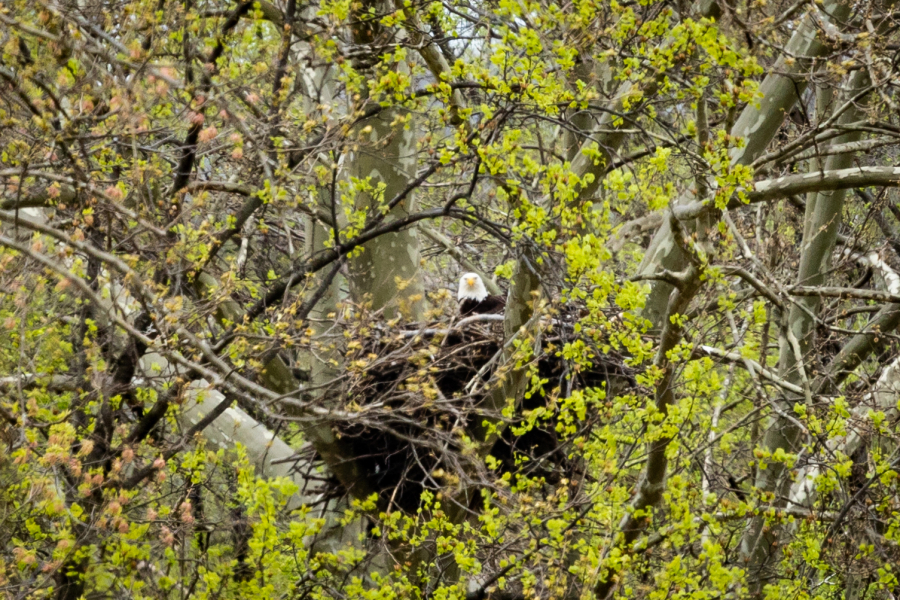Watch ospreys, eagles, otters and more with these Chesapeake wildlife cams
Over a dozen wildlife cams can be found in the Chesapeake Bay watershed

If you’re a nature lover living in the Chesapeake region, it can be difficult to spend so much of your day stuck inside, far from the forests and rivers teeming with wildlife. Fortunately, there’s a solution to this problem: Wildlife cams.
Across the Chesapeake Bay watershed, various organizations have cameras placed in the areas where birds, fish, mammals and other wildlife live. Below are over a dozen different wildlife cameras from across the region. Most of them go live in late winter and early spring when the species they cover arrive and become more active.
Tune in and find out what each species is up to at different parts of the year!
Bald eagles
Bald eagles become active in the Chesapeake Bay region as early as January, when the pairs start building or repairing their nests. The females lay their eggs from January to March, and then incubate the eggs for 5-6 weeks. In late winter, the eggs hatch, and at 10 to 12 weeks old, the chicks will develop their wing feathers needed to fly (a process called fledging). With wildlife cams, you can watch all of these milestones and see how the critters spend their day.
- Bald eagles - National Conservation Training Center (Shepherdstown, West Virginia)
- Bald eagles - Masonville Cove (Baltimore, Maryland)
- Bald eagles - Blackwater National Wildlife Refuge (Cambridge, Maryland)
- Bald eagles - National Arboretum (Washington, D.C.)
- Bald eagles - Dulles Greenway (Washington, D.C.)
Ospreys
Adult ospreys return to the Bay each year to nest in the same area in which they were born, starting with the males. Experienced breeders begin to arrive at old nest sites in late February or early March, while less experienced breeders arrive later in the season and can spend several weeks finding a mate and nesting site. Once pairs are reunited, they will begin courtship and nest building. Between mid-April and late May, females will typically lay three eggs and then incubate them for 38 to 42 days. About 55 days after hatching, the young begin to fly. Families remain together near the nesting site through July, so fledglings can learn to fish.
- Osprey at Blackwater National Wildlife Refuge (Cambridge, Maryland)
- Osprey Cam Chesapeake Conservancy (Kent Island, Maryland)
Blue herons
Found year-round throughout the Chesapeake Bay, herons nest and breed in colonies, called rookeries. Rookeries are located in isolated areas such as wooded swamps and small islands, where human and predator access is limited. Breeding will begin as early as February, with new breeders continuing to arrive at colonies well into May. From mid-March to mid-June, females will lay three to seven eggs and both parents will incubate the eggs for about 28 days. The peak of hatching takes place from mid-April to mid-July. Although they may have several eggs, the parents usually only raise one or two young; the others starve after hatching. The young fledge after about 60 days.
- Blue Heron Chesapeake Conservancy (Maryland Eastern Shore)
Peregrine falcons
Like ospreys, peregrine falcons often form monogamous bonds and return to the same nesting site each year. The pairs will breed sometime between March and May and the female will usually lay two to six red-brown eggs in May, in a high nest on cliffs, trees or buildings. The eggs hatch after about 35 days, usually in mid-June.
- Peregrine falcon - Chesapeake Conservancy (Baltimore, Maryland)
- Peregrine falcon - Virginia Department of Wildlife Resources (Richmond, Virginia)
- Peregrine falcon - Pennsylvania Department of Environmental Protection (Harrisburg, Pennsylvania)
Waterfowl and other birds
Migrating waterfowl such as black ducks, pintails and green-winged teals don’t form nests as they migrate through the region but if cameras are placed in popular refuges you can see a whole range of species from winter to spring. Other birds such as cardinals, woodpeckers and flickers can also be fun to watch. Since these birds are much more abundant than ospreys and eagles, wildlife cams tend to be placed on feeders where multiple birds show up.
- Migratory Waterfowl - Friends of Blackwater (Cambridge, Maryland)
- Bird Camera - Lancaster Conservancy (Lancaster, Pennsylvania)
Shad
We only know of one wild fish cam in the Chesapeake region, and it’s the Virginia Department of Wildlife Resources' shad cam in the James River. The camera goes live in spring when shad start their migratory journey. When that starts, you can find shad and other species like carp and lamprey swimming toward their spawning grounds.
- Shad Cam Virginia Department of Wildlife Resources (James River, Virginia)
Mammals
Mammals such as elk, beavers and otters also have streaming programs in the Chesapeake Bay watershed! The live stream of elk in Pennsylvania doesn’t start until mid-spring, but beavers and otters can be seen in wildlife centers when they’re being rehabilitated.
- Elk - Pennsylvania Game Commission (Benezette, Pennsylvania)
- Beaver - Wildlife Center of Virginia (Waynesboro, Virginia)
- Otter Indoor Cam—Calvert Marine Museum (Solomons Island, Maryland)
Are there any other wildlife cameras that you know of from the Chesapeake Bay watershed? Let us know in the comments!

Comments
Port Tobacco River Conservatory eagle cam
Don't forget about the Marsh Cam!
https://dwr.virginia.gov/marsh-cam/
Thank you!
Your comment has been received. Before it can be published, the comment will be reviewed by our team to ensure it adheres with our rules of engagement.
Back to recent stories